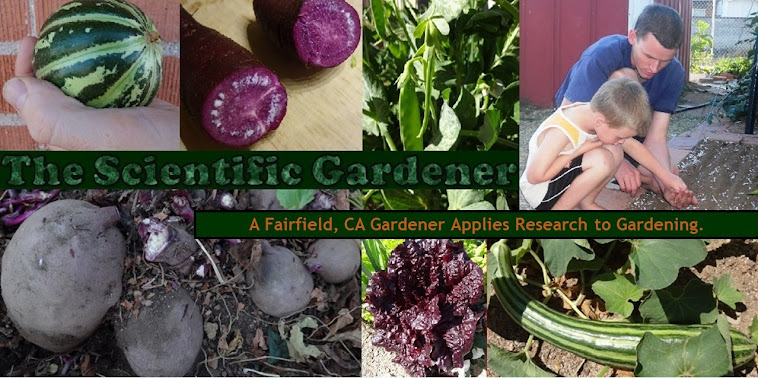All the way back in 2019 I grew a checkered cucumber variety from a small population of Carosello Spuredda Leccese cucumbers that I was trialing in the chicken garden. By divine providence, I was able to self-pollinate one of the fruits. The carosello looked pretty tender and I decided that it would be well worth trying to grow out again.
Fast-forward to 2020. Now, with a raised garden bed, I decided it was time to try out the splotchy cucumber again. I planted them soon after pulling out some other cucumber plants on the same site. Other than local cats using the garden bed as their potty place, which killed a few of the plants, the plants grew relatively well in a short amount of time.
Everything grew well until the male flowers began to form. Instead of forming with regular flowers, many of the flowers had petals that puffed in towards the middle so much that it would make pollination very unlikely. Considering this a self-terminating trait, I picked all of these flowers off of the plants and amended the soil – waiting until the plants produced flowers more suitable to pollination by bees. While I would not normally see this kind of deformity in a population of Carosello, I concluded that I may have encountered it because I had selfed the plant the previous generation. To “self” a cucumber or other outcrossing plant means to use the male flowers to pollinate the female flowers on the same plant. While this creates a genetic bottleneck that can lead to inbreeding problems, it is generally acceptable to self a melon or squash variety, as long as the generation before and afterwards are not self-pollinated.







The genetics that resulted in the splotched coloring of this specific Carosello Leccese were likely brought about by a mix of Carosello cucumbers. This was either because there were multiple kinds of cylindrical Carosello grown near each other or because genetic maintenance had not been performed on the population for so many generation that all the off-types became incorporated into the entire population. As a result, the fruit of this generation of Carosello exhibited fruit that was darker, lighter and somewhere in-between. The in-between fruit is what I will refer to as the Checkered Carosello Leccese.










From my experience growing polymorphic Carosello populations, I have noticed the following possible growing results:
1. The population remains polymorphic – 2 or more cucumbers are produced that exhibit traits that are more similar to their individual parents than a mix of either one. Many seed selections of the Carosello Tondo Manduria are this way. As if the seeds of the individual parents were grown individually, then mixed into a seed packet, thy either they exhibit characteristics exclusively of parent 1 or they exhibit characteristics of parent 2, but they rarely exhibit a homogeneous combination of either parent.
2. The population is partially homogeneous – the fruit that is grown exhibits characteristic traits of both parents, though some fruit may look more similar to one parent than another.





Even when growing varieties that are partially homogeneous, the grower may find some vines that are very variable in their shape, size and colors. These vines may be wonderful in producing diversity, but do not help the grower to isolate the desirable traits very quickly. To isolate the traits more quickly, the grower can find individual plants that consistently exhibit the desirable traits in each of their fruit. By selecting the seed from these specific vines, the grower decreases the variability. Even better is to let all the vines grow out to see how they exhibit traits, then cut down all the vines that do not produce fruit with the desirable trait as well as pull all fruit from the plants with the desirable fruit. Then, in producing a second flush of fruit, the population only consists of vines that have fruit exhibiting the desirable traits.



In growing out the plants for this cucumber variety, I was glad to that it was more homogeneous in nature and that a couple of the plants exhibited all of the desirable traits. While I did pull male flowers from the plants that exhibited the least number of desirable traits, I did need to keep enough plants to maintain genetic diversity to ensure that I did not have the same flowering problem that I observed earlier.
Of all the seed I kept, I made sure to taste female flowers from each plant. This ensures that I am not unintentionally passing on any fruit that has genetics with bitter tendencies. Additionally, I tried out the fruit at full size to learn more about its qualities. The fruit is tender, yet dense. The water content was not as high as I would have preferred, but the texture was very fine and pleasant.
Unfortunately, powdery mildew did come and finish the crop out at the end of the season.
While I entrusted others to select the next generation of this lovely Carosello variety, the Checkered Leccese is definitely one on my “keep list” because of its color, texture and ease to grow. I look forward to the possibly of growing this variety again out next year.












































































No comments:
Post a Comment
Dear Gardening Friends,
I look forward to learning more about gardening with you. Your comments help me recognize that gardening is a life-long journey.
To advertisers: Note that this blog is concerned with gardening and gardening techniques. Please do not attempt to advertise here by leaving a comment. Depending upon how egregious the comment is, it may be deleted.